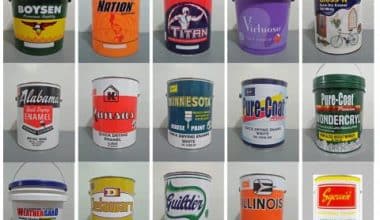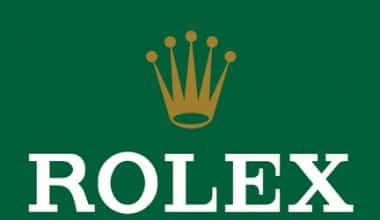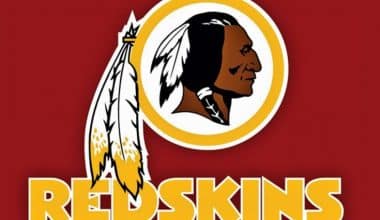Fidelity Investments is a multinational American financial firm. The company was founded by Edward C. Johnson II founded in 1946. But throughout its existence, Fidelity Investments have undergone several restructuring and, at some point, renaming. It is now one of the largest organizations in the world, with more than $ 3 trillion in assets, mutual funds, and a brokerage firm. On the other hand, the current Fidelity logo, a part of Fidelity’s success, was designed in 2011, marking a watershed moment in the company’s long history. Its international division was renamed Fidelity Worldwide Investment at this time.
But this is just on the surface. Let’s dive into the history and evolution of the Fidelity Investment brand and logo.
What is Fidelity?
Fidelity is the abbreviated name for the American financial holding company Fidelity Investments Inc., previously known as Fidelity Management & Research.
What does the Fidelity Logo Mean?
There’s no denying that the Fidelity logotype is reminiscent of two popular Freemason symbols: the Pyramid and the Eye of Providence. This could be an indication of the corporation’s ties to Freemasons.
It’s also worth noting that the image on the back of the dollar bills and the Great Seal is nearly identical. As a result, in this case, the Fidelity logo represents the company’s commitment to earning money.
The Fidelity Logo: History
Fidelity Management & Research had an international division in 1979, 23 years after it was founded, specializing in serving overseas markets outside of America. The financial corporation separated the International Division into a separate organization in 1980.
Fidelity Investments approved a new Fidelity logo in 1993, which is still used today. Fidelity underwent a rebranding in 2011. The Fidelity International department was renamed Fidelity Worldwide Investment, and its legal status was changed. Fidelity moved to its current Boston headquarters one year after expanding its financial services.
Colors and Font
The text comprises a mix of upper and lower-case characters. The letters in the first word are wide, smooth, and bold in type from the Sans Serif category. Vertical rectangles are the correct shape for the legs. The last two letters are linked at the level of the crossbar “t,” which flows smoothly into “y.” The lower inscription is small, with wide intersymbol spacing that extends almost the entire length of the upper word.
Color is extremely important to the corporation. She chose two monetary palettes for her logo to attract investors. The first color is green, which is found on dollar bills. The second color is yellow, as seen on gold bars. According to experts, this combination effectively attracts customers’ attention.
Fidelity Logo: Brand History
Fidelity Investments Inc. is one of the largest retail investment service providers in the United States. IIt offers one of the world’s largest selections of mutual funds and discount brokerage, trust, and institutional services.
Innovation has been especially important in the company’s growth. The investment community has expressed concern about how Fidelity executives have led the company into uncharted territory. Fidelity, for example, was the first company to offer mutual funds and check-writing services, the first to provide hourly updates on a mutual fund’s value, and the first to offer same-day buying and selling of fund stocks.
Fidelity is privately held and headquartered in Boston, Massachusetts. While standing out from the crowd, the financial corporation is one of the largest mutual fund managers in the United States, trailing only Merrill Lynch with over 3 million corporate and individual customers.
1920s
Fidelity Fund was established in 1930. The investment industry struggled as it recovered from the 1929 stock market crash and entered the Great Depression. Edward C. Johnson II, a Boston lawyer, purchased the fund and became its director and president.
1946
Johnson established Fidelity Management & Research Company, preceded Fidelity Investments, in 1946 to serve as an investment advisor for the Fidelity Fund. Johnson also established the Puritan Fund, the first income-focused mutual fund to invest in common stock.
At the time, investment management was focused on capital preservation, but Johnson’s goal was to profit. And he did make a profit. His strategy was to buy stocks with growth potential rather than blue-chip stocks.
Johnson believed that one person’s knowledge and instincts were the keys to managing a mutual fund rather than management by committee. As a result, he was the first to appoint someone to manage a mutual fund.
1950s
Gerry Tsai was one of his first and most successful fund managers. In the early 1950s, Johnson hired the young, callow immigrant from Shanghai as a stock expert. Tsai began managing the Fidelity Capital Fund in 1957, investing in speculative stocks such as Xerox and Polaroid. His performance earned him customers and fame, and he oversaw over $1 billion in less than ten years. Tsai left Fidelity in 1965 after Johnson reportedly informed him that he wanted to pass the company on to his son, Edward C. Johnson III.
Edward C. Johnson III, a Harvard graduate, served in the military for a few years before joining Fidelity in 1957. The Trend Fund was the number one growth fund from 1961 to 1965 when he managed the newly established Trend Fund.
1960s
Throughout the 1960s, the American economy and Fidelity flourished. Fidelity established the Magellan Fund in 1962, which grew to become the world’s largest mutual fund. In 1964, the company also established FMR Investment Management Service for company pension plans, followed in 1967 by the Keogh Plan, a retirement fund for self-employed people.
Fidelity International was founded in Bermuda in 1968 to attract foreign investment. Fidelity Service Company was founded in 1969 to serve customer accounts in-house, making it one of the first fund organizations to do so.
1972
In 1972, Edward Johnson III succeeded his father as president of Fidelity Investments just as the market began to fall. Investors began to abandon equity funds and stocks in favor of the safety provided by savings accounts. Nonetheless, the company established FMR Corporation in the same year to provide corporate administration services to other Fidelity companies.
The financial market remained almost dormant during Johnson III’s first two years in office, with assets falling by more than 30 percent to $3 billion. Johnson III needed to get out of this mess. The money market fund stepped in to help him. Using the deposits of investors, these new funds created very short-term loans.
Money market funds proved to be a wise investment because the principal is not at risk, and only the interest changes. However, Johnson III knew the new funds would never be competitive unless they provided the same service and liquidity as savings accounts. As a result, in 1974, he established Fidelity Daily Income Trust, the first money market fund to offer check-writing, a groundbreaking and immediately successful idea.
While the founder of Fidelity had focused on mutual funds, his son ventured into new areas of the business. As a result, Johnson III began vertically integrating the company in 1973, taking over back-office account-processing services from banks that did the job on behalf of most mutual funds.
In addition, he switched to direct sales rather than broker sales, which allowed the company to cut costs. However, Fidelity spent a fortune on telephones, computers, and advertising while cash-strapped due to a down market.
1977
Fidelity established the Individual Retirement Account and Municipal Bond Fund in the mid-1970s, the first open-ended, no-load fund in America to invest in tax-free municipal bonds. Edward Johnson II, the company’s founder, retired in 1977, and his son took over as CEO and chairman. That same year, Peter Lynch took over as manager of the Magellan Fund, which had $22 million in assets at the time.
Fidelity was the first major financial company in the country to offer budget brokerage services after the United States abolished fixed-rate brokerage commissions in 1975, forming Fidelity Brokerage Services. Fidelity Institutional Services was formed the following year to manage relationships with company clients.
1980
Throughout the 1980s, Fidelity, like the rest of America, relished the bull market. Between 1974 and 1981, the company experienced significant growth, with assets under management increasing from $3 billion to $13 billion.
From 1980 to 1983, Fidelity introduced several new products, including the tax-free Money Market Trust (America’s first tax-exempt, no-load money market fund); the Ultra Service Account (the mutual fund group’s sole asset-management account); Fidelity Money Line (which offers electronic fund-transfer services nationwide); and sector funds (which contained standalone portfolios specializing in specific industries).
Fidelity also spun off several subsidiary companies, including Fidelity Systems, Fidelity Management Trust, Fidelity Marketing, Fidelity National Financial (a publicly traded title insurance company in the United States), and Fidelity Investments Southwest (a Dallas-based remote operations center). In 1986, Fidelity opened another remote operations office in Salt Lake City after introducing telephone switching, which allowed customers to trade funds over the phone.
Fidelity also introduced one-day trading of its Select Portfolio funds, allowing investors to receive hourly quotes and purchase or redeem shares between 10 a.m. and 4 p.m. rather than waiting until after the latter time to receive the fund’s final net asset value.
1986
By 1986, Fidelity had 2,800 employees, $50 billion in assets under management, 104 mutual funds, and over 2 million customers, 400 000 of whom were invested in the $4 billion Magellan Fund. From 1977, when Peter Lynch first took over Magellan, to 1987, the fund’s stock increased by over 2,000%, outperforming all other mutual funds and establishing Lynch as the best fund manager in the industry.
The 1987 Wall Street crash hard hit Lynch’s Magellan Fund because he kept little liquid capital and didn’t invest much in conservative stocks. Fidelity was caught off guard and had to sell many shares in a falling market to service redemptions. Fidelity sold nearly $1 billion in shares on the first day of the crash alone. Fidelity’s asset base had been reduced by $8 billion in one week. In 1988, a year after the crash, the company’s revenues were 25% lower, and profits were 70% lower.
Although Johnson III does not want Fidelity to go public, many analysts believe it is only a matter of time. For the time being, Johnson is focused on Fidelity’s long-term success and strengthening its discount brokerage business—which is already one of the country’s top three— to entice small-time investors back into the fold.
Following the 1987 Wall Street crash, Fidelity closed four offices but opened three more, with plans to open five to ten more in the next five to ten years and to buy out smaller discount brokers. Johnson III has also reduced his staff by nearly a third to avoid another crash. In addition, the company is expanding its international appeal and beginning to penetrate the lucrative insurance industry.
1989
Fidelity had over $80 billion in assets under management by 1989, accounting for more than 9% of the entire mutual fund industry. That’s quite impressive for a family business that began 43 years ago with a single $3 million mutual fund.
The Bottom Line
Fidelity Investments Inc. is a private investment management firm founded in 1946 as a mutual fund. Investment advice, fund distribution, life insurance, wealth management, securities clearance, execution, and retirement services are now available from the company. It manages balanced mutual funds, fixed income, and equity for individual investors, financial advisors, institutional investors, and businesses.
Fidelity, headquartered in Boston, Massachusetts, is one of America’s largest investment management firms, with over 26 million customers, $2.4 trillion in global assets under management, and $6.5 trillion in customer assets.
Related Articles
- CSR (Corporate Social Responsibility): Definition, Types & Examples
- FIDELITY VS ROBINHOOD: How to Decide Which is Best (Detailed Review)
- BLUE CHIP STOCKS: Meaning, Characteristics & How to Invest
- Fidelity 401k: login, Withdrawal & all you should know!
- Johnson & Johnson Logo: Why They’ve Never Changed their Logo






